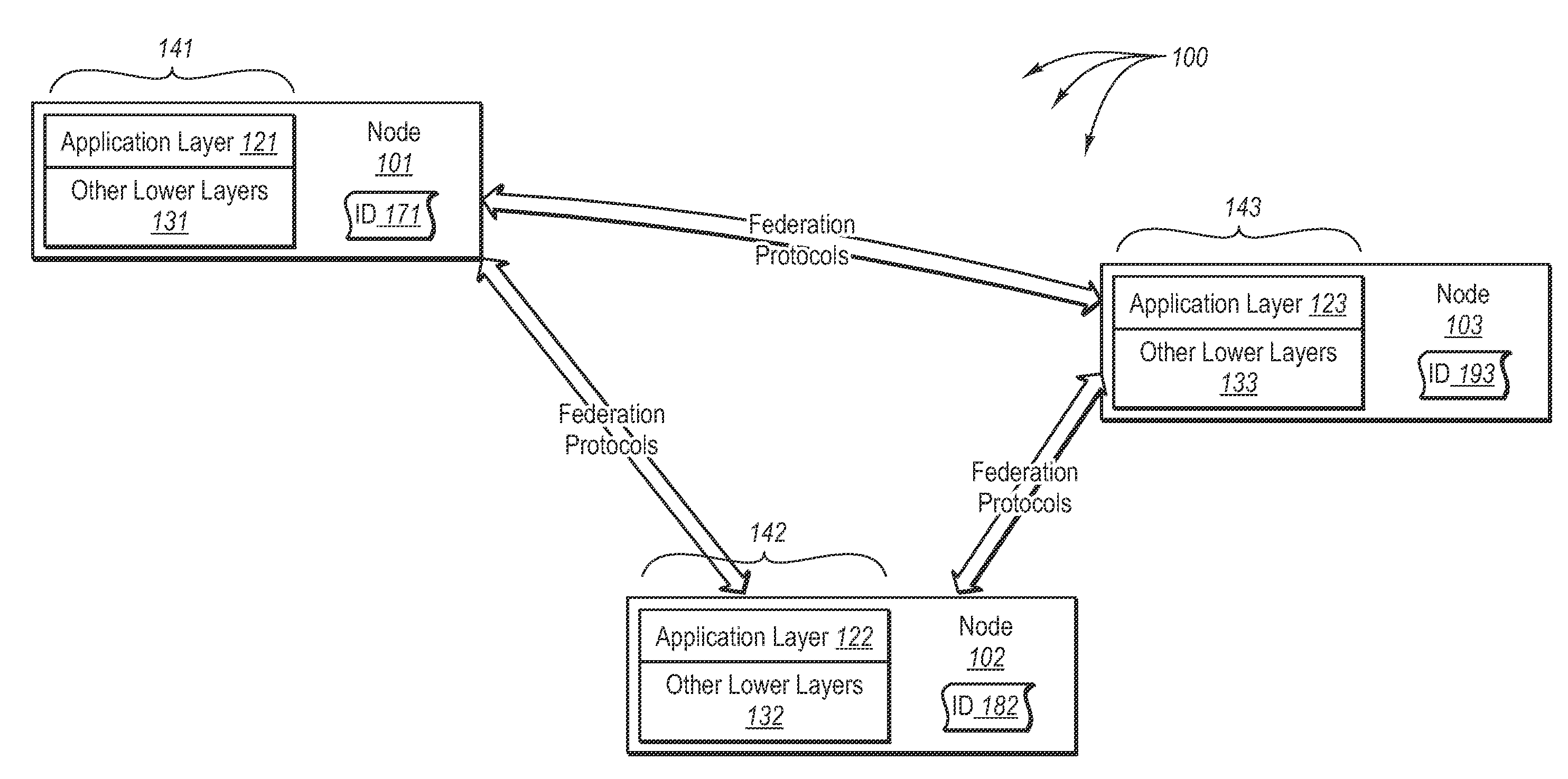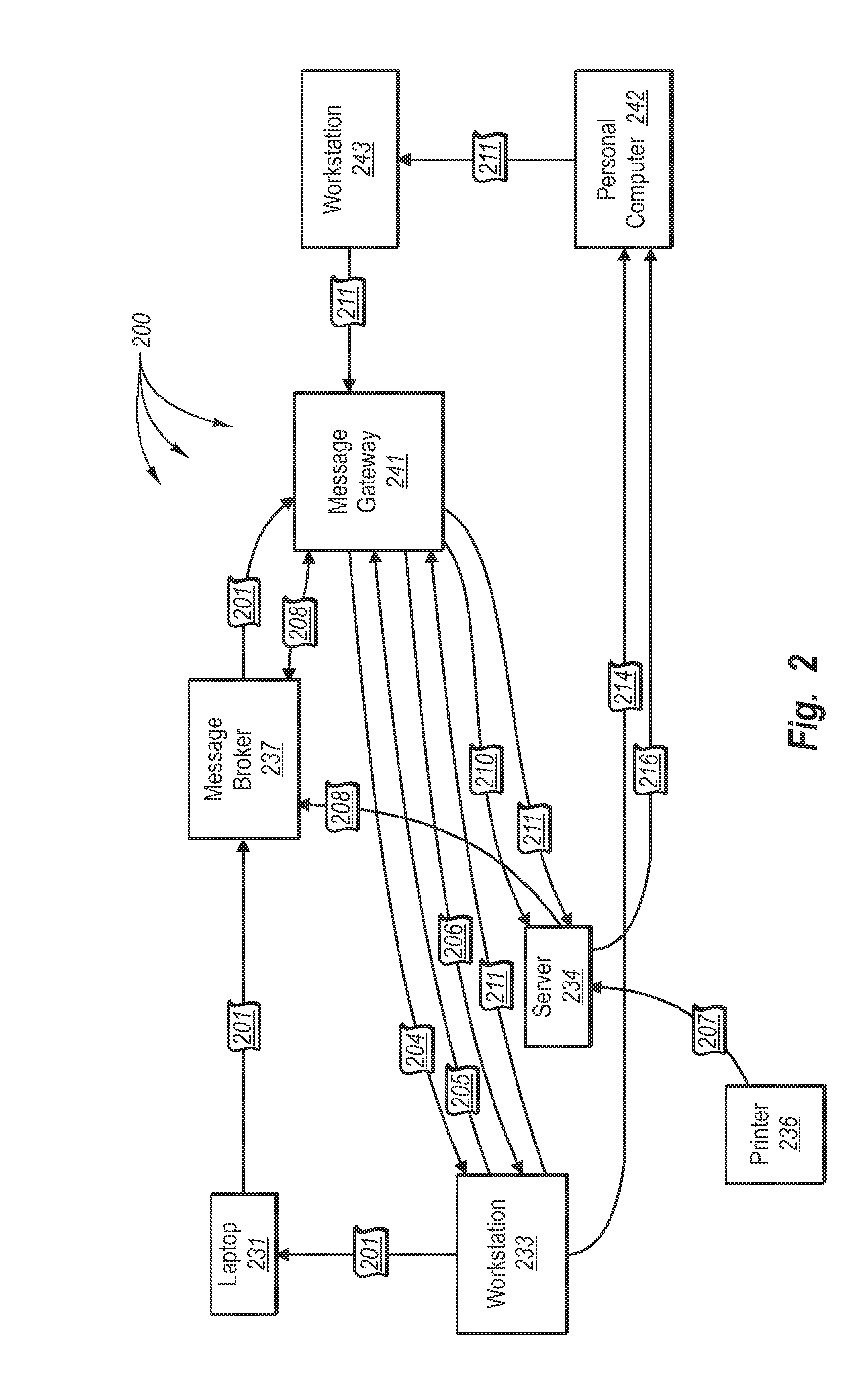Maintaining consistency within a federation infrastructure
a technology of federation infrastructure and consistency, applied in the direction of transmission, error detection/correction, instruments, etc., can solve the problems of not providing a developer with all the functionality that is needed in an application, dns is not sufficiently dynamic, and can be difficult to access network resources
- Summary
- Abstract
- Description
- Claims
- Application Information
AI Technical Summary
Benefits of technology
Problems solved by technology
Method used
Image
Examples
case 1
[0188] X.id>Y.id[0189]Y.s=X,Y.p=X.p, X.p.s=Y, and X.p=Y
case 2
[0190] X.id[0191]Y.p=X, Y.s=X.s, X.s.p=Y, and X.s=Y
[0192]In response to the join message, node X (the node that processed the join message) can send a join response back to node Y. The join response can indicate the predecessor node (Y.p) and successor node (Y.s) for node Y. Node Y can receive the join response and process the join response to become aware of its predecessor and successor nodes. After processing the join response, Node Y can be a weak routing participant in the federation. For example, Node Y can simply forward message sent to it, either to its successor or predecessor nodes. Thus, Node Y is inserted into the federation infrastructure but routing and neighborhood tables are not populated. Before reaching this point, node Y will request other nodes sending it messages to redirect the messages sent to it through a different node by returning a status message to the sending node indicating that node Y's liveness phase is in an inserting phase-state.
[0193]Generally, fro...
PUM
 Login to View More
Login to View More Abstract
Description
Claims
Application Information
 Login to View More
Login to View More - R&D
- Intellectual Property
- Life Sciences
- Materials
- Tech Scout
- Unparalleled Data Quality
- Higher Quality Content
- 60% Fewer Hallucinations
Browse by: Latest US Patents, China's latest patents, Technical Efficacy Thesaurus, Application Domain, Technology Topic, Popular Technical Reports.
© 2025 PatSnap. All rights reserved.Legal|Privacy policy|Modern Slavery Act Transparency Statement|Sitemap|About US| Contact US: help@patsnap.com



